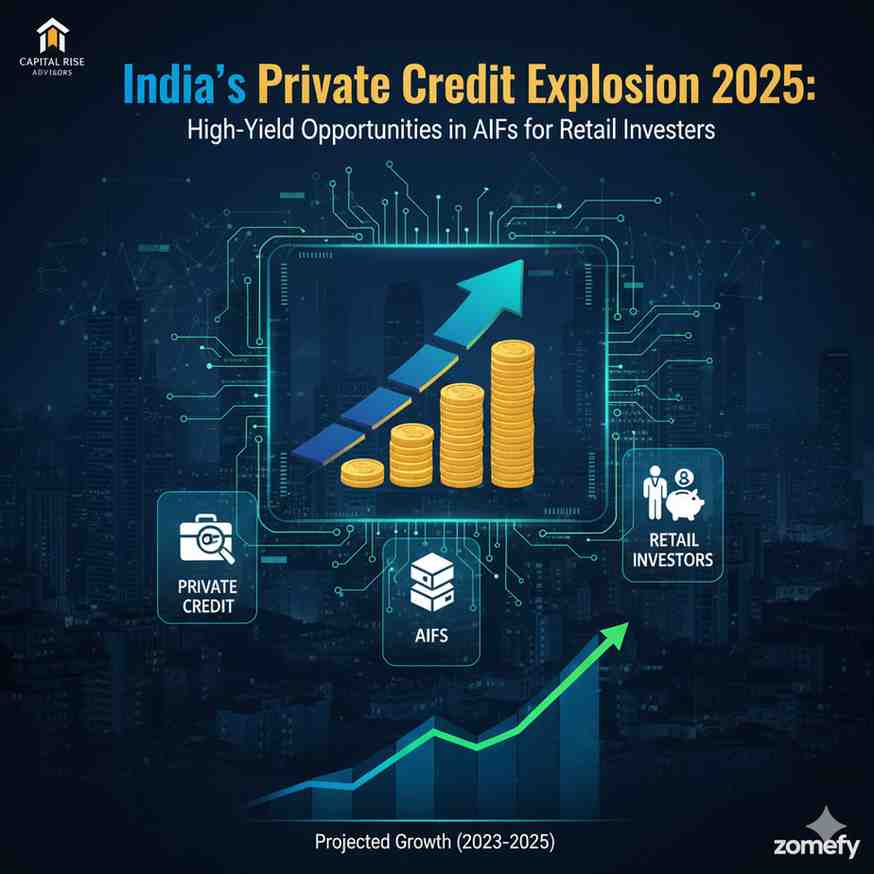Navigating India's Green Bond Surge: Investment Strategies and Market Outlook for 2025
India's green bond market has witnessed an unprecedented surge over recent years, emerging as a pivotal vehicle in financing the country's ambitious transition to a low-carbon and sustainable economy.
Navigating India's Green Bond Surge: Investment Strategies and Market Outlook for 2025
What You Can Do Next
- Read the full article for complete insights
- Save for later reference
- Share with others learning about this topic
Image not available
India's green bond market has witnessed an unprecedented surge over recent years, emerging as a pivotal vehicle in financing the country's ambitious transition to a low-carbon and sustainable economy. By December 2024, the cumulative issuance of green, social, sustainability, and sustainability-linked (GSS+) bonds in India reached an impressive USD 55.9 billion, marking a 186% increase since 2021 and positioning India as the fourth-largest emerging market in this space globally. This growth is driven by increasing government support, evolving regulatory frameworks, and heightened investor appetite for sustainable assets. For retail investors and financial professionals alike, understanding the nuances of this rapidly evolving market is essential to harnessing the opportunities it presents while managing inherent risks. This article delves into India’s green bond landscape, exploring key market drivers, regulatory context, prominent issuers, and practical investment strategies tailored for 2025 and beyond.
India’s Green Bond Market Landscape in 2025
India’s sustainable debt market has expanded rapidly, with green bonds constituting approximately 83% of the total green, social, and sustainability (GSS+) issuance as of end-2024. This segment is dominated by issuers from the renewable energy, infrastructure, and financial sectors, reflecting a broadening base of market participants and themes. The cumulative GSS+ issuance of USD 55.9 billion by December 2024 reflects strong investor confidence and policy support. Key government initiatives such as the National Climate Finance Taxonomy and RBI’s guidelines on sustainable finance have enhanced transparency and alignment with international standards. Furthermore, the International Financial Services Centre (IFSC) in GIFT City has introduced a Guidance Framework on Sustainable and Sustainability-Linked Lending, facilitating green finance within a global financial hub.
Notable issuers in the Indian green bond market include Indian Renewable Energy Development Agency (IREDA), L&T Infrastructure Finance, Tata Cleantech Capital, and KPI Green Energy. KPI Green Energy’s USD 76.5 million green bond issuance in 2025, credit-enhanced with a GuarantCo guarantee and rated AA+(CE) by CRISIL and ICRA, exemplifies growing innovation and institutional participation. Such credit enhancements and guarantees increase investor confidence and market liquidity.
Issuer | Issuance Date | Amount Raised (₹ Cr) | Coupon (%) | Tenure (Years) | Credit Rating |
|---|---|---|---|---|---|
| Indian Renewable Energy Development Agency | Jan 2019 | 865 | 8.49 | 10 | AA |
| L&T Infrastructure Finance | Jun 2017 | 667 | 7.59 | 7 | AA |
| Tata Cleantech Capital | Dec 2018 | 180 | 8.74 | 5 | AA- |
| KPI Green Energy | 2025 | ₹570 (USD 76.5 mn) | -- | 5 | AA+(CE) |
This table highlights the diversity of issuers and the typical tenor and coupon rates of green bonds in India, providing retail investors with a practical snapshot of investment-grade green debt instruments available in the market.
Regulatory and Policy Framework Driving Growth
India’s regulatory environment has been a significant catalyst for the green bond market’s expansion. The Securities and Exchange Board of India (SEBI) has issued guidelines on ESG debt securities, including green bonds, which have standardized disclosure and reporting requirements to enhance market integrity and investor protection. The Reserve Bank of India (RBI) has also released frameworks encouraging banks and NBFCs to adopt sustainable lending practices.
The National Climate Finance Taxonomy, currently in draft form, aims to create a harmonized classification system for climate-aligned activities, helping channel capital efficiently to projects that support India’s net-zero target by 2070. Additionally, IFSC Banking Units in GIFT City have started operating under a dedicated sustainable finance framework, allowing for innovation in green and sustainability-linked lending.
Key regulatory milestones:
Regulatory Body | Initiative | Impact |
|---|---|---|
| SEBI | Guidelines on ESG Debt Securities (2023) | Standardized disclosure, increased investor confidence |
| RBI | Sustainable Lending Framework | Encouraged banks to integrate ESG risk |
| IFSC, GIFT City | Guidance Framework on Sustainable Lending | Facilitated international green bond issuances |
| Ministry of Finance | National Climate Finance Taxonomy (Draft) | Classification of climate-aligned activities to guide investments |
For investors, these regulatory frameworks reduce greenwashing risks and improve transparency, making green bonds a more reliable investment option within India’s evolving sustainable finance ecosystem.
Investment Strategies for Indian Retail Investors and Professionals
With the green bond market maturing, retail investors and financial professionals must adopt nuanced strategies to capitalize on growth while managing risks. Green bonds offer stable returns with lower volatility compared to equities, making them suitable for diversification in fixed-income portfolios. However, the green bond market also faces challenges such as regulatory inconsistencies, declining green premiums, and liquidity constraints.
Key actionable strategies include:
- Diversification across issuers and sectors: Invest in green bonds issued by a mix of government-backed agencies (e.g., IREDA), corporates (e.g., Tata Cleantech), and innovative renewable developers (e.g., KPI Green) to balance risk and return.
- Evaluate credit quality and enhancements: Prefer bonds with credit enhancements or high credit ratings (AA and above) to mitigate default risk, as exemplified by KPI Green’s AA+(CE) rating.
- Consider sustainability-linked bonds: These instruments tie coupon rates to ESG performance targets, aligning financial returns with sustainability outcomes.
- Monitor regulatory developments: Stay updated on SEBI, RBI, and Ministry of Finance regulations to anticipate changes affecting green bond issuance and reporting.
- Use green bond mutual funds and ETFs: For retail investors with limited direct access, funds specializing in ESG fixed income provide diversified exposure with professional management.
Fund Name | 1-Year Return (%) | 3-Year Return (%) | Expense Ratio (%) | AUM (₹ Cr) |
|---|---|---|---|---|
| ICICI Prudential Green Bond Fund | 9.2 | 10.5 | 0.85 | 1,200 |
| Aditya Birla Sun Life ESG Bond Fund | 8.7 | 9.8 | 0.90 | 950 |
| SBI Magnum Green Fund | 8.9 | 10.1 | 0.80 | 1,100 |
Risk considerations:** Investors should be aware of potential risks including interest rate fluctuations, issuer credit risk, regulatory changes, and the possibility of a shrinking green premium (the yield advantage green bonds may have over conventional bonds). Additionally, liquidity in secondary markets may be limited compared to traditional bonds.
By adopting these strategies, investors can position their portfolios to benefit from India’s green bond surge while aligning investments with long-term sustainability goals.
Comparative Analysis: Green Bonds vs Conventional Bonds
Understanding the differences between green bonds and conventional bonds is crucial for effective portfolio allocation. Green bonds fund projects with environmental benefits, often carrying additional reporting requirements and sometimes a modest greenium (pricing premium).
Feature | Green Bonds | Conventional Bonds |
|---|---|---|
| Purpose of Funds | Environmental/sustainable projects (renewables, energy efficiency) | General corporate/government financing |
| Issuer Types | Corporates, government agencies, financial institutions | Similar issuer base |
| Yield | Typically slightly lower due to greenium; can vary | Market-driven yield based on credit risk |
| Reporting & Transparency | Mandatory ESG impact reporting, third-party verification | Standard financial reporting |
| Market Liquidity | Lower liquidity, emerging market | Generally higher liquidity |
| Risk Profile | Credit risk plus potential regulatory risk | Credit risk |
For Indian investors, green bonds offer a compelling blend of impact and income but require due diligence on issuer credibility and project impact. Their integration into diversified fixed-income portfolios complements traditional bonds by adding an ESG dimension, increasingly valued by investors.
Market Outlook and Emerging Trends for 2025 and Beyond
The outlook for India’s green bond market in 2025 remains robust, supported by strong domestic demand for sustainable finance, expanding issuer base, and supportive policy frameworks. MUFG and Climate Bonds Initiative project sustained double-digit growth in GSS+ bond issuance, with increasing diversification into social and sustainability-linked bonds. The market is expected to reach USD 100 billion by 2030, driven by sectors such as renewable energy, electric mobility, water management, and green infrastructure.
Emerging trends include:
- Growth of sustainability-linked bonds (SLBs): Linking bond coupons to ESG targets incentivizes issuers to meet sustainability goals, attracting impact-focused investors.
- Increased credit enhancement mechanisms: Guarantees and partial credit enhancements, like those used by KPI Green, are likely to proliferate, improving bond ratings and market participation.
- Integration with global standards: India’s alignment with international taxonomies and frameworks will enhance cross-border capital flows.
- Rise of retail participation: Enhanced awareness and availability of green bond funds will increase retail investor involvement.
- Technological innovations: Use of blockchain and digital platforms to improve transparency and reduce issuance costs.
Trend | Implication | Investor Action |
|---|---|---|
| Sustainability-Linked Bonds Growth | Aligns financial returns with ESG performance | Consider SLBs for dynamic income linked to sustainability |
| Credit Enhancements | Improved credit ratings and liquidity | Prefer credit-enhanced bonds for lower risk |
| Global Standards Alignment | Boosts investor confidence and cross-border flows | Monitor regulatory updates and invest in compliant bonds |
| Retail Investor Engagement | Broader market participation and liquidity | Use mutual funds and ETFs for diversified exposure |
| Technology Adoption | Lower issuance costs, better transparency | Explore platforms offering green bond investments |
Investors should remain vigilant of risks such as regulatory changes, interest rate volatility, and potential greenwashing. Engaging with credible issuers and using diversified investment vehicles will be key to navigating this evolving market successfully.
Sector-wise Opportunities and Challenges
Renewable energy remains the cornerstone of India’s green bond issuances, accounting for a significant portion of funds raised. Other sectors gaining momentum include electric mobility, energy efficiency, water and waste management, and green buildings.
Sector | 2024 Issuance Share (%) | Growth Drivers | Key Challenges |
|---|---|---|---|
| Renewable Energy | 55 | Government subsidies, falling technology costs | Grid integration, land acquisition |
| Electric Mobility | 15 | Policy incentives, rising EV adoption | Charging infrastructure, battery recycling |
| Energy Efficiency | 10 | Corporate ESG mandates, cost savings | Measurement & verification of savings |
| Water & Waste Management | 12 | Urbanization, regulatory push for sanitation | Project scale, technology adoption |
| Green Buildings | 8 | Real estate demand, green certification norms | Higher upfront costs, market awareness |
Investors should assess sector-specific risks and growth potential when selecting green bonds or funds. For example, renewables offer stability but face regulatory hurdles, while electric mobility provides growth potential with technology risks. Diversification across sectors can enhance risk-adjusted returns in a green bond portfolio.
Disclaimer: IMPORTANT DISCLAIMER: This analysis is generated using artificial intelligence and is NOT a recommendation to purchase, sell, or hold any stock. This analysis is for informational and educational purposes only. Past performance does not guarantee future results. Please consult with a qualified financial advisor before making any investment decisions. The author and platform are not responsible for any investment losses.
Continue Your Investment Journey
Discover more insights that match your interests

Bajaj Finance Stock Analysis 2025: Q3 Earnings Beat & Record AUM Growth Amid Rising Retail Credit Demand
Bajaj Finance Limited, a flagship non-banking financial company (NBFC) under the Bajaj Finserv umbrella, continues to capture investor attention with its robust Q3 FY25 earnings and record Assets U...

Tokenized Assets: Democratizing Investment and Wealth Creation
Explore how asset tokenization is making fractional ownership possible for real estate, art, and private equity, transforming access for a broader range of investors.

India’s Private Credit Explosion 2025: High-Yield Opportunities in AIFs for Retail Investors
India's private credit market is experiencing an unprecedented explosion in 2025, emerging as a high-yield powerhouse for retail investors seeking superior returns amid traditional fixed-income lim...

India’s 2025 Financial Literacy Revolution: Empowering Retail Investors Through Digital Education and Community-Driven Wealth Building
India stands at a pivotal moment in its economic journey, where the convergence of digital transformation, regulatory reforms, and a young, aspirational population is reshaping the landscape of ret...
Explore More Insights
Continue your financial education journey
